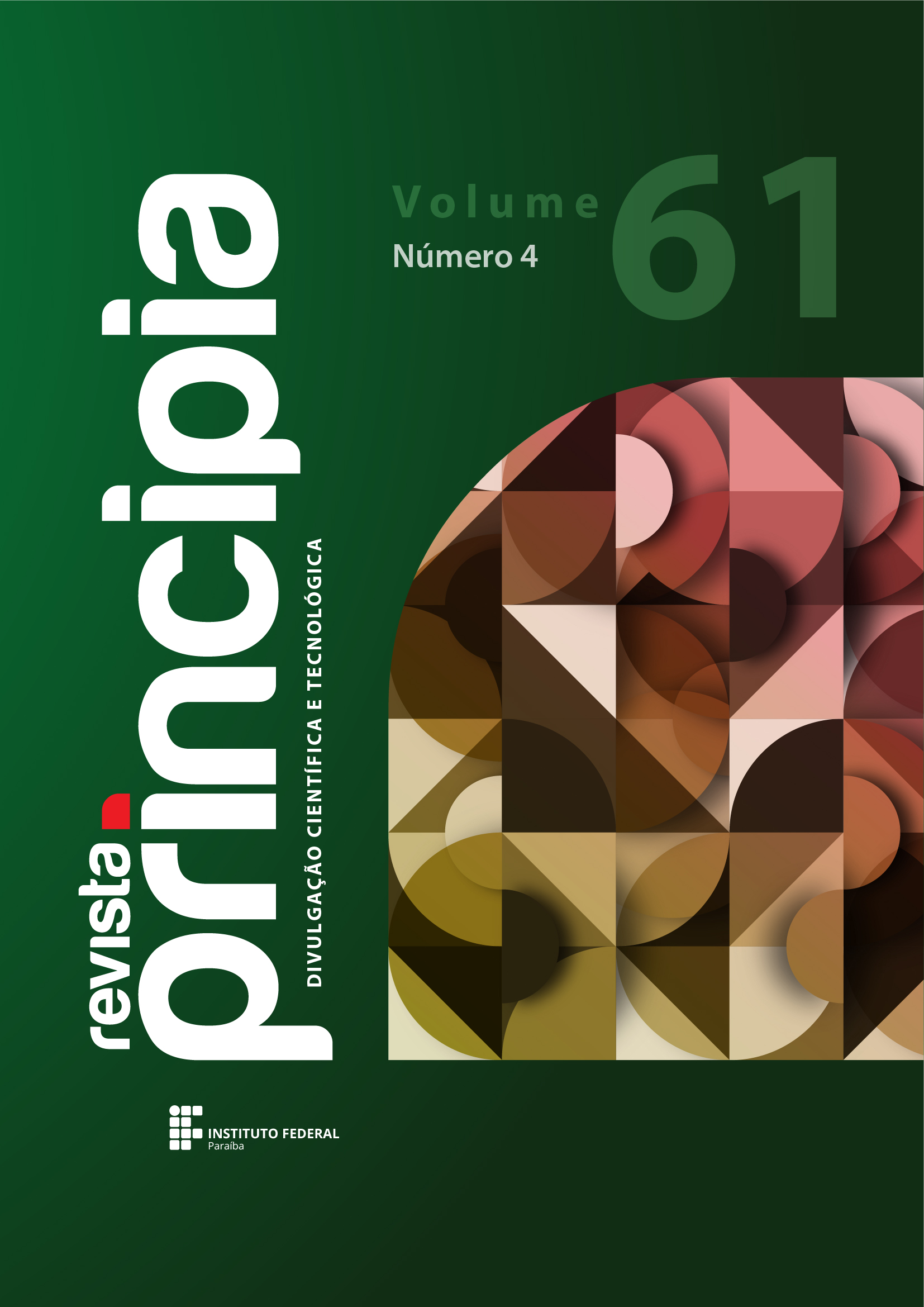Sim-ECG: plataforma computacional de código aberto para classificação de patologias cardíacas
DOI:
https://doi.org/10.18265/2447-9187a2022id7597Palavras-chave:
aprendizagem de máquina, aprendizagem profunda, classificação, eletrocardiograma, inteligência artificialResumo
Técnicas de inteligência artificial vêm sendo utilizadas no auxílio ao diagnóstico de patologias. Com elas, torna-se possível analisar automaticamente uma grande quantidade de dados complexos. Dessa forma, patologias podem ser detectadas em estágios menos avançados. Neste artigo, apresenta-se uma plataforma computacional de código aberto que analisa sinais obtidos por meio de exames de eletrocardiograma. Para isso, foram utilizadas bases de dados públicas que possibilitaram analisar e classificar as informações, considerando diversos métodos de inteligência artificial. Os resultados obtidos demonstram a viabilidade da plataforma para estudos e desenvolvimento de ferramentas computacionais para auxílio no diagnóstico precoce de patologias cardíacas.
Downloads
Métricas
Referências
ASSEN, M. V.; MUSCOGIURI, G.; CARUSO, D.; LEE, S. J.; LAGHI, A.; DE CECCO, C. N. Artificial intelligence in cardiac radiology. La Radiologia Medica, v. 125, p. 1186-1199, 2020. DOI: https://doi.org/10.1007/s11547-020-01277-w.
BOCK, S.; WEIß, M. A proof of local convergence for the Adam optimizer. In: 2019 INTERNATIONAL JOINT CONFERENCE ON NEURAL NETWORKS (IJCNN), 2019, Budapest. Proceedings […]. Budapest: IEEE, 2019. p. 1-8. DOI: https://doi.org/10.1109/IJCNN.2019.8852239.
BOUSSELJOT, R.-D. Physionet PTB Diagnostic ECG Database. 2004. Disponível em: http://www.physionet.org/content/ptbdb/1.0.0. Acesso em: 23 abr. 2023.
DEY, D.; CHAUDHURI, S.; MUNSHI, S. Obstructive sleep apnoea detection using convolutional neural network based deep learning framework. Biomedical Engineering Letters, v. 8, p. 95-100, 2018. DOI: https://doi.org/10.1007/s13534-017-0055-y.
FEENY, A. K.; CHUNG, M. K.; MADABHUSHI, A.; ATTIA, Z. I.; CIKES, M.; FIROUZNIA, M.; FRIEDMAN, P. A.; KALSCHEUR, M. M.; KAPA, S.; NARAYAN, S. M.; NOSEWORTHY, P. A.; PASSMAN, R. S.; PEREZ, M. V.; PETERS, N. S.; PICCINI, J. P.; TARAKJI, K. G.; THOMAS, S. A.; TRAYANOVA, N. A.; TURAKHIA, M. P.; WANG, P. J. Artificial intelligence and machine learning in arrhythmias and cardiac electrophysiology. Circulation: Arrhythmia and Electrophysiology, v. 13, n. 8, e007952, 2020. DOI: https://doi.org/10.1161/circep.119.007952.
FERREIRA, J. L.; LOPES, F. G. Eletrocardiograma para enfermeiros. [S.l.]: BoD GmbH DE, 2013.
FLETCHER, G. S. Epidemiologia clínica: elementos essenciais. Porto Alegre: Artmed, 2021.
GUVENIR, H. A.; ACAR, B.; DEMIROZ, G.; CEKIN, A. A supervised machine learning algorithm for arrhythmia analysis. In: COMPUTERS IN CARDIOLOGY, 1997, Lund. Proceedings […]. Lund: IEEE, 1997. p. 433-436. DOI: https://doi.org/10.1109/CIC.1997.647926.
HSIEH, C.-H.; LI, Y.-S.; HWANG, B.-J.; HSIAO, C.-H. Detection of atrial fibrillation using 1D convolutional neural network. Sensors, v. 20, n. 7, 2136, 2020. DOI: https://doi.org/10.3390/s20072136.
JIANG, B.; GUO, N.; GE, Y.; ZHANG, L.; OUDKERK, M.; XIE, X. Development and application of artificial intelligence in cardiac imaging. British Journal of Radiology, v. 93, n. 1113, 20190812, 2020. DOI: https://doi.org/10.1259/bjr.20190812.
KACHUEE, M.; FAZELI, S.; SARRAFZADEH, M. ECG heartbeat classification: a deep transferable representation. In: IEEE INTERNATIONAL CONFERENCE ON HEALTHCARE INFORMATICS (ICHI), 2018, New York. Proceedings […]. New York: IEEE, 2018. p. 443-444. DOI: https://doi.org/10.1109/ICHI.2018.00092.
KILIC, A. Artificial intelligence and machine learning in cardiovascular health care. The Annals of Thoracic Surgery, v. 109, n. 5, p. 1323-1329, 2020. DOI: https://doi.org/10.1016/j.athoracsur.2019.09.042.
LI, Q.; RAJAGOPALAN, C.; CLIFFORD, G. D. Ventricular fibrillation and tachycardia classification using a machine learning approach. IEEE Transactions on Biomedical Engineering, v. 61, n. 6, p. 1607-1613, 2013. DOI: https://doi.org/10.1109/TBME.2013.2275000.
LI, Z.; DERKSEN, H.; GRYAK, J.; HOOSHMAND, M.; WOOD, A.; GHANBARI, H.; GUNARATNE, P.; NAJARIAN, K. Supraventricular tachycardia detection via machine learning algorithms. In: IEEE INTERNATIONAL CONFERENCE ON BIOINFORMATICS AND BIOMEDICINE (BIBM), 2018, Madrid. Proceedings […]. Madrid: IEEE, 2018. p. 2419-2422. DOI: https://doi.org/10.1109/BIBM.2018.8621164.
MOODY, G.; MARK, R. Physionet Apnea-ECG Database. 2000. Disponível em: http://physionet.org/content/apnea-ecg/1.0.0. Acesso em: 23 abr. 2023.
MOODY, G.; MARK, R. Physionet MIT-BIH Arrhythmia Database. 2005. Disponível em: http://www.physionet.org/content/mitdb/1.0.0. Acesso em: 23 abr. 2023.
RAHMAN, Q. A.; TERESHCHENKO, L. G.; KONGKATONG, M.; ABRAHAM, T.; ABRAHAM, M. R.; SHATKAY, H. Utilizing ECG-based heartbeat classification for hypertrophic cardiomyopathy identification. IEEE Transactions on Nanobioscience, v. 14, n. 5, p. 505-512, 2015. DOI: https://doi.org/10.1109/tnb.2015.2426213.
SIONTIS, K. C.; NOSEWORTHY, P. A.; ATTIA, Z. I.; FRIEDMAN, P. A. Artificial intelligence-enhanced electrocardiography in cardiovascular disease management. Nature Reviews Cardiology, v. 18, n. 7, p. 465-478, 2021. DOI: https://doi.org/10.1038/s41569-020-00503-2.
SOBRAC – SOCIEDADE BRASILEIRA DE ARRITMIAS CARDÍACAS. Perguntas e respostas sobre arritmias cardíacas. 2022. Disponível em: https://www.sobrac.org/campanha/perguntas-e-respostas-sobre-arritmias-cardiacas. Acesso em: 23 abr. 2023.
URTNASAN, E.; PARK, J.-U.; JOO, E.-Y.; LEE, K.-J. Automated detection of obstructive sleep apnea events from a single-lead electrocardiogram using a convolutional neural network. Journal of Medical Systems, v. 42, 104, 2018. DOI: https://doi.org/10.1007/s10916-018-0963-0.
Publicado
Como Citar
Edição
Seção
Licença
Copyright (c) 2023 Revista Principia - Divulgação Científica e Tecnológica do IFPB

Este trabalho está licenciado sob uma licença Creative Commons Attribution 4.0 International License.
Esta revista, seguindo as recomendações do movimento de Acesso Aberto, proporciona seu conteúdo em Full Open Access. Assim os autores conservam todos seus direitos permitindo que a Revista Principia possa publicar seus artigos e disponibilizar pra toda a comunidade.
A Revista Principia adota a licença Creative Commons 4.0 do tipo atribuição (CC-BY). Esta licença permite que outros distribuam, remixem, adaptem e criem a partir do seu trabalho, inclusive para fins comerciais, desde que lhe atribuam o devido crédito pela criação original.
Os autores estão autorizados a enviar a versão do artigo publicado nesta revista em repositório institucionais, com reconhecimento de autoria e publicação inicial na Revista Principia.
Demais informações sobre a Política de Direitos Autorais da Revista Principia encontram-se neste link.
























 (precisa estar logado)
(precisa estar logado)






